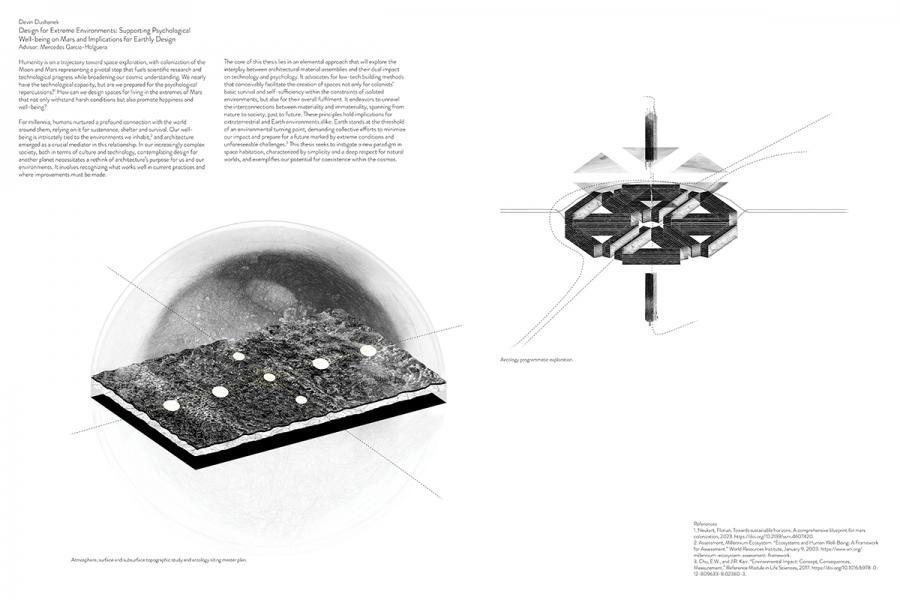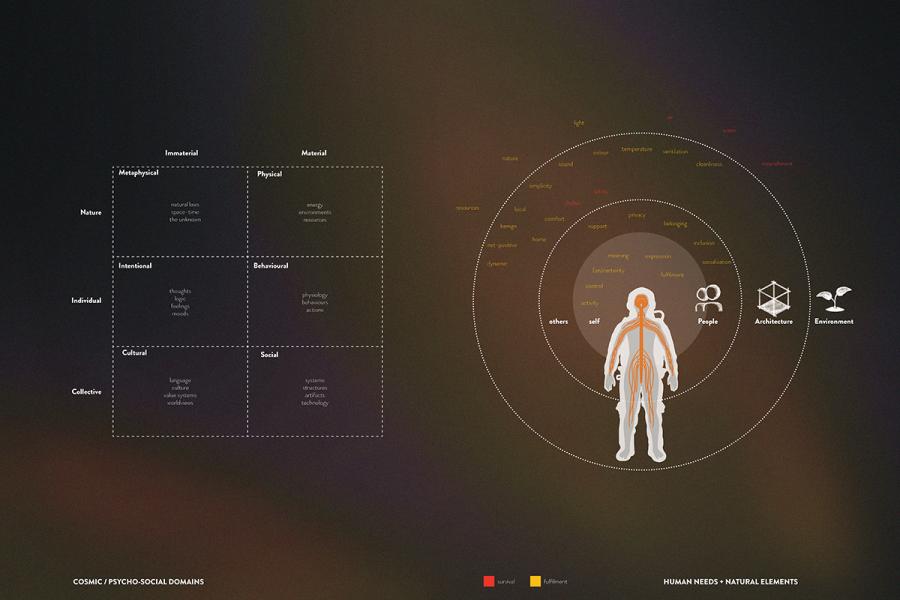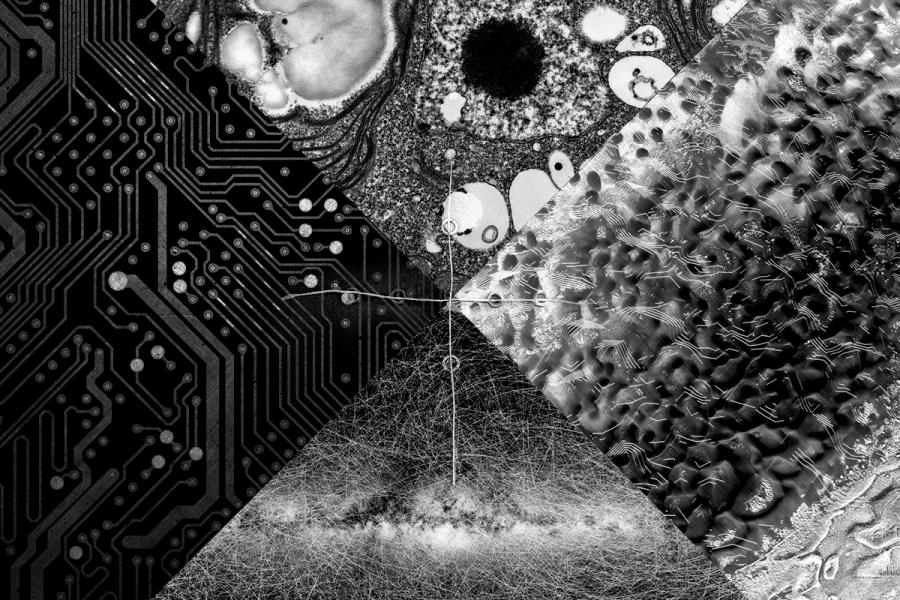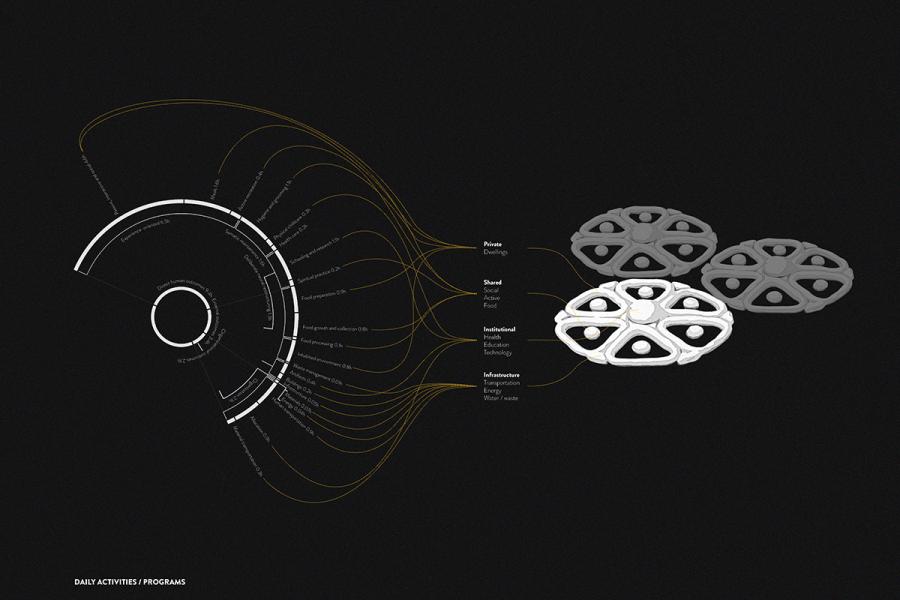Devin Dushanek
Advisor: Mercedes Garcia-Holguera





Design for Extreme Environments: Supporting Psychological Well-being on Mars and Implications for Earthly Design
Humanity is on a trajectory toward space exploration, with colonization of the Moon and Mars representing a pivotal step that fuels scientific research and technological progress while broadening our cosmic understanding. We nearly have the technological capacity, but are we prepared for the psychological repercussions?1 How can we design spaces for living in the extremes of Mars that not only withstand harsh conditions but also promote happiness and well-being?
For millennia, humans nurtured a profound connection with the world around them, relying on it for sustenance, shelter and survival. Our well-being is intricately tied to the environments we inhabit,2 and architecture emerged as a crucial mediator in this relationship. In our increasingly complex society, both in terms of culture and technology, contemplating design for another planet necessitates a rethink of architecture’s purpose for us and our environments. It involves recognizing what works well in current practices and where improvements must be made.
The core of this thesis lies in an elemental approach that will explore the interplay between architectural material assemblies and their dual impact on technology and psychology. It advocates for low-tech building methods that conceivably facilitate the creation of spaces not only for colonists’ basic survival and self-sufficiency within the constraints of isolated environments, but also for their overall fulfilment. It endeavors to unravel the interconnections between materiality and immateriality, spanning from nature to society, past to future. These principles hold implications for extraterrestrial and Earth environments alike. Earth stands at the threshold of an environmental turning point, demanding collective efforts to minimize our impact and prepare for a future marked by extreme conditions and unforeseeable challenges.3 This thesis seeks to instigate a new paradigm in space habitation, characterized by simplicity and a deep respect for natural worlds, and exemplifies our potential for coexistence within the cosmos.
1. Neukart, Florian. Towards sustainable horizons: A comprehensive blueprint for mars colonization, 2023. https://doi.org/10.2139/ssrn.4607420.
2. Assessment, Millennium Ecosystem. “Ecosystems and Human Well-Being: A Framework for Assessment.” World Resources Institute, January 9, 2003. https://www.wri.org/millennium-ecosystem-assessment-framework.
3. Chu, E.W., and J.R. Karr. “Environmental Impact: Concept, Consequences, Measurement.” Reference Module in Life Sciences, 2017. https://doi.org/10.1016/b978-0-12-809633-8.02380-3.
